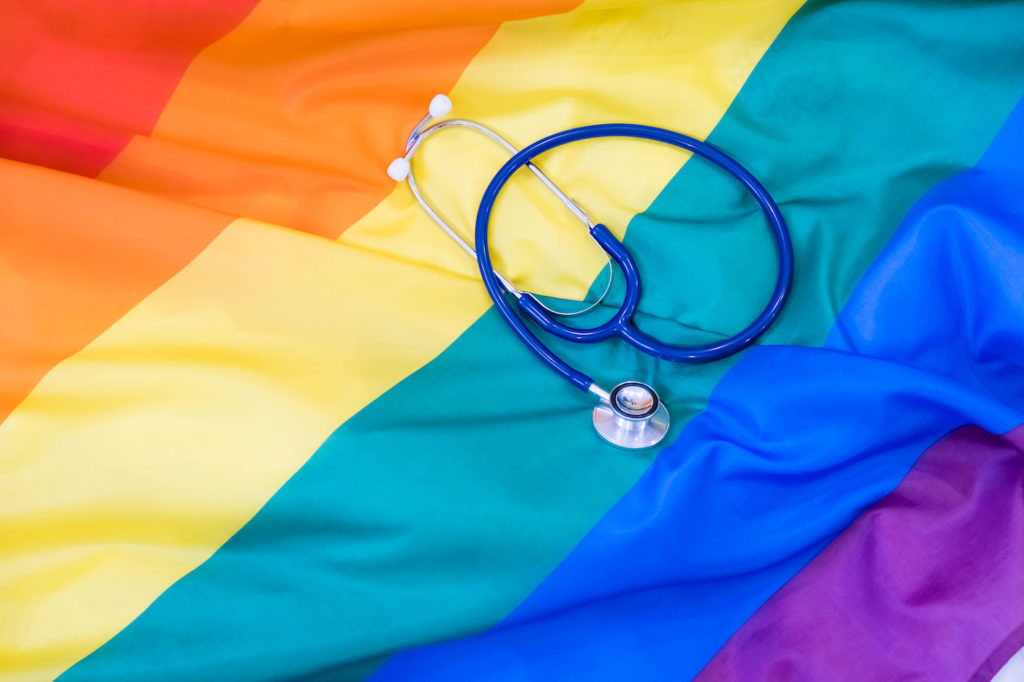
One in six LGBTQ+ people and one in five for transgender individuals have avoided vital preventative health care due to horrible experiences and discrimination, according to the American Cancer Society. Photo: iStock
Homophobia could cause cancer.
For example, LGBTQ+ individuals are vulnerable to cancer disparities and risk factors, such as smoking, due in part to systemic discrimination, such as homophobia, according to the American Cancer Society.
What’s more, one in six LGBTQ+ people and one in five for transgender individuals have avoided vital preventative health care due to horrible experiences and discrimination, according to the organization.
Those findings are part of the organization’s 2024 Cancer Facts and Figures report, which for the first time includes a section dedicated to the LGBTQ+ community.
“Perhaps the greatest health disparity faced by LGBTQ+ communities is the presumption-of-care gap, which is the fear that a provider will refuse care due to gender identity or sexual orientation,” the report says.
In nine states, (Alabama, Arkansas, Florida, Illinois, Mississippi, Montana, Ohio, South Carolina, and Tennessee) it’s legal for medical professionals to refuse care to LGBTQ+ patients, covering approximately 20% of the LGBTQ+ population, according to Equality Maps.
Although LGBTQ+ individuals were historically less likely to have health insurance than the general population, increased access to care as a result of the implementation of the Affordable Care Act in 2014 and the marriage equality decision by the U.S. Supreme Court in 2015 have narrowed this gap.
The report’s LGBTQ+ section addresses risk factors, comorbidities, and unique challenges faced in receiving preventative care and additional stresses the community experiences.
The LGBTQ+ section summarizes the latest information on the prevalence of major modifiable cancer risk factors and preventive measures, including screening in the LGBTQ+ populations, as well as challenges faced by LGBTQ+ individuals with cancer.
Knowledge of these inequalities is accumulating, but surveillance data on cancer in the LGBTQ+ population is limited to national surveys on risk factors and screenings.
Population-based data is unavailable for incidence and mortality because sexual orientation and gender identity, also known as SOGI data, are not consistently collected in medical records.
Approximately 40% of cancers are caused by issues that can be modified by the patient, such as tobacco and alcohol use, excessive weight, and diet, the report says.
However, many LGBTQ+ individuals experience “minority stress,” which can elevate risk factors. Coined in 2003, the term refers to “the discrepancy and conflict that arises between the values of a historically minoritized group and the dominant culture or society.”
“Minority stressors” faced by LGBTQ+ individuals can be individual or structural and include prejudice, rejection, discrimination, and internalized homophobia. Exposure to these stressors may lead to increased prevalence of mental health or substance use disorders and unhealthy behaviors that increase cancer risk.
Established research has shown that at the cellular level, psychological stress influences biochemical changes such as increased cortisol levels, which can lead to chronic inflammation that increases the risk of cancer and other diseases.
Additional research has shown that individuals who experience greater minority stress are more likely to express gene mutations that are functionally related to cancer, and to have chronic side effects of cancer treatment.
The report reminds that reducing minority stressors by implementing interventions at the structural, interpersonal, and individual level is a crucial component of eliminating cancer disparities in LGBTQ+ communities.
These interventions include “establishing institutional safe spaces for LGBTQ+ individuals and programs designed to increase knowledge and empathy among providers.”
Here are additional insights from the report:
- Lesbians and bisexual women with excess weight are at higher risk for 12 different cancers, including breast, uterine, and pancreatic.
- Excessive alcohol use, which can increase the risks of esophageal, colorectal and oral cancers, is highest among bisexual women.
- 14% of bisexual women consume more than seven drinks a week, double the number of their lesbian and straight peers.
- Gay men are more likely to seek preventative care for colorectal cancer, with 67% getting screened versus 58% of their heterosexual peers.
- More LGBTQ+ people have access to preventable health care and cancer screening than a decade ago, thanks to increased health care access across the board.
- Transgender men are approximately 30% less likely to have lower cervical cancer screenings than their cisgender peers, elevating their risks for cervical cancer.
- Only 40% of oncologists at National Cancer Institute care centers said they were confident in their knowledge of health needs for lesbian, gay or bisexual individuals
- Only 20% were confident in their knowledge of the health needs of transgender individuals.
